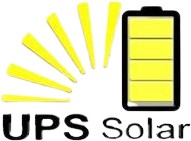Solar battery technology has evolved into a highly sophisticated way to store electricity generated by the sun’s rays hitting the photovoltaic panels installed on a roof or flat surface nearby. Solar power storage is a key part of the overall electricity generation system. It allows electricity that has been produced but is not needed immediately to be safely stored in a specialist battery for later use when the sun’s rays are no longer able to generate enough power to keep up with demand. This could be during the night, or when the day becomes too cloudy or overcast for the sun’s energy to reach the surface of the panels.
Home owners and business users can also move further into a sustainable way of living and working by investing in solar battery technology. Not only does the solar power process produce renewable, non-polluting and low-carbon energy that helps you to reduce reliance on fossil fuels, but having solar batteries added into the mix can store surplus electricity that is not used right away. This means you can make even more prudent use of the solar power that your system generates – and so avoid wasting precious resources and enjoy a greater financial return on investment. Installing solar batteries leaves you better protected against power outages and could even give you the opportunity to sell any excess electricity you do not require back to the National Grid.
How does solar battery technology work?
Solar energy is generated by energy that is emitted from the sun’s rays hitting the photovoltaic panels on an exposed flat exterior surface and being converted into direct current (DC) electricity. This is then changed by the system’s connected inverter into alternating current (AC). AC can then be used to power lights, heating and electrical appliances in the associated business premises or home. When the DC electricity is not needed to power an appliance right away, it transfers instead to the solar battery without needing to be turned into AC until it is required to power something. Inside the battery, the DC electricity is safely stored inside, charging the battery until it is needed, for example after the sun goes down and the system stops generating electricity from the panels.
Having a solar battery helps ensure that you will never lose power in your business or home. You can use the electricity stored in it at any time, even during a sunny day if your area experiences a power cut, or you are using more solar-generated electricity than normal for whatever reason and must draw on your reserves. As power lines become compromised through damage, sabotage or simple deterioration through age of adverse weather conditions, this reassurance becomes even more crucial to home owners and businesses keen to continue operating as normal.
What happens inside your solar power storage system?
Solar power storage systems rely on having one or more batteries attached to the main solar energy generating set-up in order to have somewhere to keep the unused electricity until it is needed. There are two main types of solar battery technology: lithium ion and lead acid. Lithium ion batteries are becoming a more popular option for many, despite the technology being slightly more expensive to purchase initially. Lithium ion batteries are used in many everyday items, including vehicles, smart devices, pumps, power tools and entertainment systems. They can achieve a high energy density, meaning that they normally last longer and perform better than lead acid alternatives. They are smaller and weigh less too, making them the more aesthetic, practical option to install in a home solar energy set-up.
Both battery types work by storing a charge – in this case, solar-generated energy – and discharging electrons via electrochemical processes to supply power to items needing electricity to function. Lithium ion batteries, as the name might suggest, moves lithium ions around inside the battery, creating electrical charges that can power appliances, lights etc. If the charges are not released by being connected to the electric circuit, they remain inside the battery, being safely stored until they are needed later on. They can be charged and discharged many times over, which leads to the battery having a longer useful life. Thus adding value to your solar power system for many years to come.

